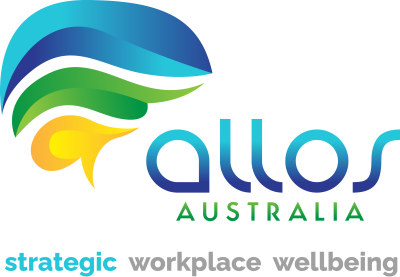This post is the second in a series of Q&A sessions with Psychological Health and Safety experts, Nick Watts and John Holt. [Read the first post here]
In this episode, we ask the question: Why is Psychological Health and Safety such a hot topic right now?
Nick Watts
The big change in the working world is that the power has shifted from the organisation to the employee. Employee expectations have risen; what were once perks of the job are now basic expectations. One key expectation is that employers do what is necessary to provide reasonable care and a mentally healthy workplace; this includes the elimination or psychological hazards such as workplace bullying and strategies to mitigate the risk of psychological harm such as dangerous levels of work related stress which lead to mental illness.
Employees also want flexibility. The covid pandemic has brought Working from home (WFH) into the mainstream for Australian workplaces, and most employees believe they should be allowed to do this at least some of the time. Employees also want faster promotion, respect, recognition and reward. They also want variety and believe job satisfaction is a reasonable expectation. Some people are looking for several part-time jobs to split their time, because they find the variation stimulating and suits their own personal requirements.
The businesses that are going to survive this evolution in the work environment need to provide their employees with a sense of purpose and belonging as well as permit them to be their authentic selves, including being open about their mental health conditions and making reasonable adjustments. On top of all of this, a growing number of staff expect to be able to discuss their ambitions and have their manager help them realise them. While this is a substantial list of demands, if leaders can do this within the organisation, evidence shows that everybody wins because it reduces the desire for employees to look for a new job; they are engaged in their work and see how they contribute to a larger purpose. Such a place is a psychologically healthy workplace, where physical, mental, and emotional wellbeing is considered, and there is a feeling of mutual trust.
While this is a substantial list of demands, if leaders can do this within the organisation, evidence shows that everybody wins because it reduces the desire for employees to look for a new job; they are engaged in their work and see how they contribute to a larger purpose.
The cost of absenteeism in an organisation is beyond financial. When a fully trained and competent employee is away from work, either their role is not covered, or a deputy is required to do the work. Either way, the service to the customer, whether internal or external, is compromised. In many cases, the rest of the team has to cover the work, which adds to their strain because their ability to perform the extra role is rarely up to the same level, and on top of that, their own work is affected.
Similarly, if a person is not fully engaged in their work, they suffer presenteeism whereby they’re distracted and unengaged. This negatively impacts the end product of their work, adds to the work related stress of their teammates, puts customer relationships at risk, and the productivity and reputation of the business.
When an employee leaves the business, the impact on teammates and customers is profound. There is also a longer-term cost to the business in the form of attrition which routinely runs into tens of thousands of dollars in recruitment costs, onboarding and training, and the loss of production associated with the absence of the employee in the time it takes to replace them.
The value offered in ensuring that the workplace is providing a trusting environment, where employees feel respected and have a sense of purpose, means that they are provided with challenges to progress their career within the current organisation, and their leader knows when they are ready to be challenged. They are focused and engaged; they have a sense of purpose and belonging and are not looking for new opportunities outside the company.
Financially for every person who doesn’t leave, there is a great benefit. There are other financial, reputational, and customer benefits for improved productivity of reduced absenteeism and presenteeism.
Beyond these benefits, there is the improved wellbeing of the staff and the associated positives. Achieving a trusting workplace enables learning and openness to deliver process improvements. If the workforce is comfortable suggesting better ways of working, and the leader is receptive to the ideas, who needs consultants to suggest improvements in the working practices?
John Holt
Great question and to be honest that really is the $64,000 question. I believe the real answer of the growing awareness and interaction between occupational health and safety, the consequence of poor workplace mental health and work-related psychological health is more complex, interconnected, and deeper than we can currently appreciate.
Perhaps one aspect of our big focus now is because of the paradox of the psychological distress associated with social media, which is also the same media that has opened and facilitated a more open discussion on the de-stigmatisation of mental health and psychological safety? Looking for an example of how much this has shifted led me to The Australian Institute of Health and Welfare. Their assessment of the Medicare Benefits Schedule (MBS) created in response to the mental health impact of Covid pandemic discovered that “Between 16 March 2020 and 19 September 2021, almost 21 million MBS-subsidised mental health-related services were processed.” The Australian Bureau of Statistics puts the 2021 population of Australia at 25,704,304. Amongst the distressing statistics is the recognition of hope, hope that so many people sought professional help through counselling and psychotherapy – rather than not.
For me, the question of why psychological health and safety is on the rise presents an opportunity to develop a new positive pathway, a shift in the discussion on occupational risk and to work with a much wider community.
However, understanding the impact of psychosocial hazards and psychosocial risk on workplace health and safety is, in this context, relatively new. The recognition of the difficulties of identifying a timeline of occupational psychological health and safety was highlighted in 2000 when the peer-reviewed academic journal Occupational Medicine published a series of papers attempting to establish the historical relationship between mental health and work. The researchers “reviewed published research material to indicate the current position and has suggested further research that is needed to clarify the relationship between work and mental health.” Academic speak for “…this is really interesting, we couldn’t find anything this time, but we’d really like to keep looking.”
A recent keyword search for “Psychosocial health and safety” in the database of the State Library of NSW (SLNSW) presents 7,750 pages of results, with the earliest result dating from the 1940s. A similar search for “Psychological health and safety presented more than 24,500 pages dating back to the 1900s. Yet available books within the SLNSW are slim pickings indeed, interestingly all written post-2000 and also covering aspects of workplace stress. Interestingly, the etymology of the word “stress”, dates back to c1300s with associations to a more modern association to the 1930s by Dr Hans Selye – “the non-specific response of the body to any demand for change.”
Ideally, we must look back to see if there is an identifiable cross-over point when mental health practitioners were finally heard by the wider medical world and governmental institutions. What they saw was a growing, worrying trend, and finally, steps were taken towards legislating safeguards and support of mental health and wellbeing in alignment with broader worker health and safety.
With the interaction between the public and the private, we become aware of changes occurring, especially those related to ‘us’. Changes, which in turn trigger a realisation and a growing consensus that this was something much bigger, outside of the individual, and whatever was happening, had (and has) the potential (and the actuality) to impact on occupational health and safety, which ultimately means it could contribute to people being seriously hurt at work.
For me, the question of why psychological health and safety is on the rise presents an opportunity to develop a new positive pathway, a shift in the discussion on occupational risk and to work with a much wider community. A community with the aim of understanding how work has changed and how that change has and is applied in how we design and think about work. And ultimately ensuring that work, the worker, and the workplace is safe.
It is also about exploring and understanding the historical development of workplace wellbeing and the impact of psychosocial safety in a direct working context. It presents an opportunity to not only stand on the shoulders of the giants who came before us but the obligation to ensure we don’t reinvent their wheels. The next step is continuing to develop the practical interaction, and ongoing learning within and across the workplace and occupational world, where psychosocial hazard identification, risk assessment and appropriate controls are normalised, integrated and commonplace, and not in themselves feared.
For myself, the ‘when’ is as critical as the ‘what’ and the ‘how’ and is a real area of interest across many Industrial and Occupational Health History areas and, of course, is recognised indirect practical application. I have discovered that [to borrow and paraphrase from earlier], the “research material to indicate the current position has suggested further research is needed to clarify the Historical relationship and the practical health and safety management between work and mental health.” To ultimately develop practical research outcomes, we must use and build upon historical learning and knowledge align with current understanding, learning and knowledge to build a better ‘next’.
About the authors:
John Holt is Lead Health & Safety Auditor with Allos Australia. He runs our New Lens program which assists businesses to better understand and identify key opportunities for additional efficiencies and effectiveness of work design and safety management systems. Learn more about John and the team here.
Nick Watts has an MBA in Project Management and over 30 years of operational management experience in government and private sectors including GM roles in Health, Safety, Environment and Wellbeing. Nick heads up Allos’ New Lens program. Learn more about Nick here.



